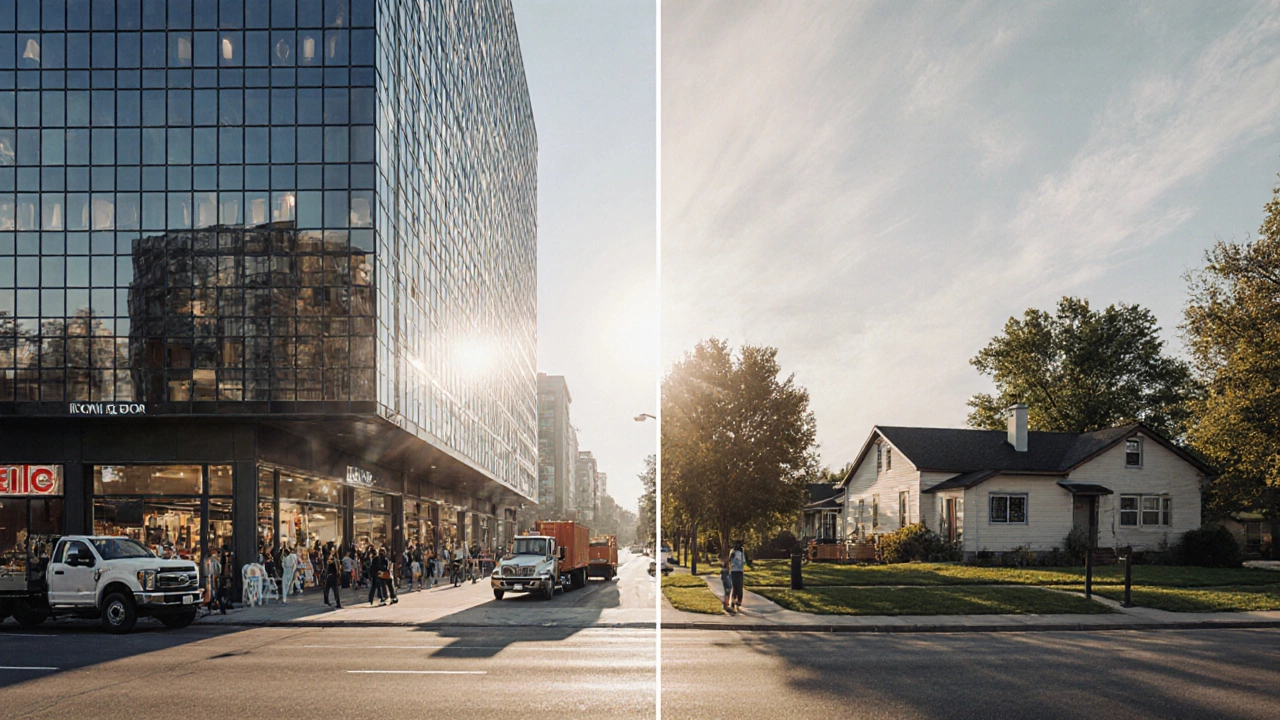Commercial construction vs non commercial: Key differences explained
Learn the key differences between commercial and non‑commercial construction, covering purpose, financing, regulations, design, timelines, and stakeholder roles.
When we talk about commercial construction, building projects designed for business use like offices, retail spaces, or warehouses. Also known as business construction, it follows strict codes for high foot traffic, fire safety, and accessibility that don’t apply to homes. On the other side, non-commercial construction, includes homes, small apartments, and personal structures meant for private living. Also known as residential construction, it’s built to last for families, not crowds. These aren’t just different styles—they’re governed by entirely different rules.
The biggest difference? Commercial construction has to handle way more people, heavier loads, and stricter inspections. A single office building might need three elevators, emergency exits every 75 feet, and fire-rated walls between floors. A house? One exit is often enough. The materials are different too—commercial projects use more steel, concrete, and industrial-grade wiring, while homes lean on wood framing and simpler systems. You won’t find the same type of galvanized wire in a home that you’d see holding up a warehouse roof. And don’t forget the permits: commercial jobs need zoning approvals, environmental reviews, and sometimes public hearings. A homeowner just needs a building permit and maybe a neighbor’s nod.
Costs don’t even compare. A commercial build can run 3 to 5 times more per square foot than a house, not because it’s fancier, but because it’s more complex. You’re not just putting up walls—you’re installing HVAC systems for 500 people, commercial-grade plumbing, data conduits for networks, and emergency power backups. Non-commercial builds focus on comfort and efficiency, not capacity. And timelines? Commercial projects often take months longer because every phase needs sign-off from multiple agencies. A house can be framed in a week. A retail center? That’s 6 months before the first drywall goes up.
What you’ll find in this collection are real-world breakdowns of how these two worlds operate. From why mixed-use buildings need fire separations, to how foundation repair costs swing wildly depending on whether it’s a store or a condo. You’ll see what materials are used in modern new builds for offices versus homes, how building codes change across regions, and why a crane operator’s pay jumps when the job isn’t a house but a high-rise. These aren’t theoretical differences—they’re the day-to-day realities that shape every brick, wire, and beam.

21 October
Learn the key differences between commercial and non‑commercial construction, covering purpose, financing, regulations, design, timelines, and stakeholder roles.